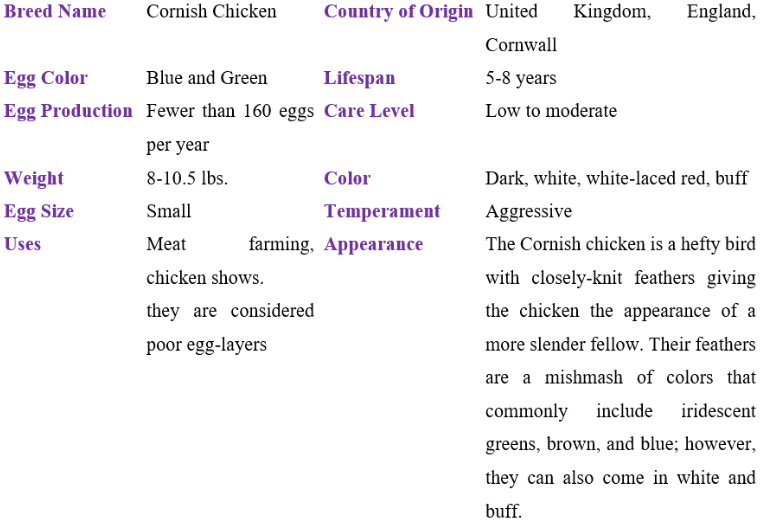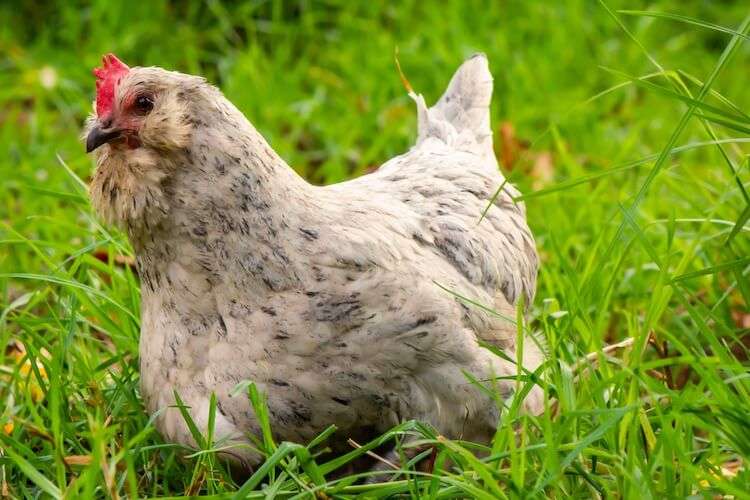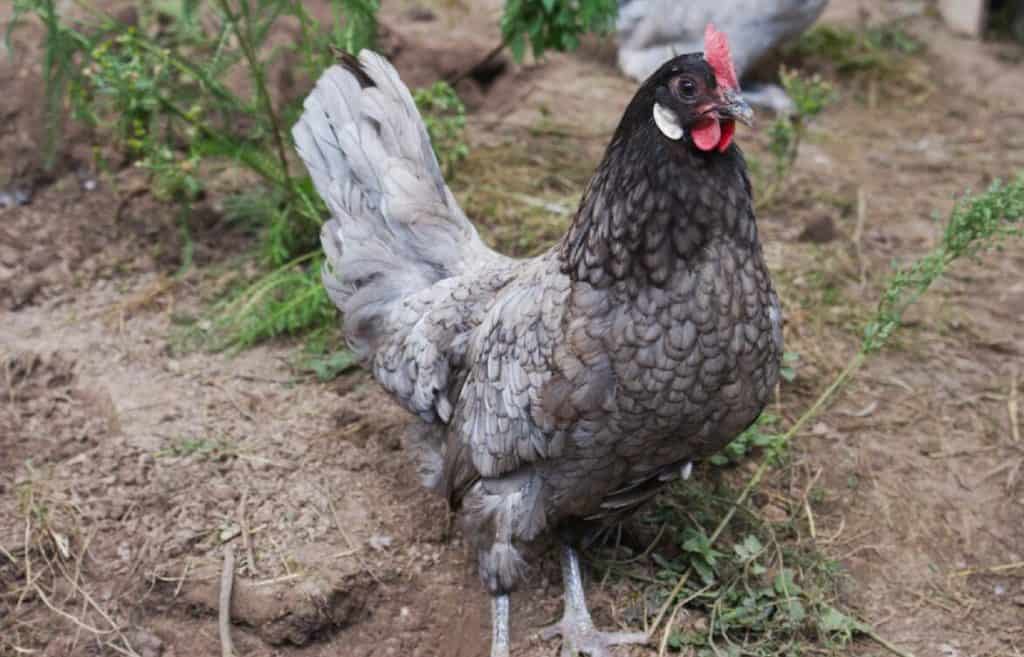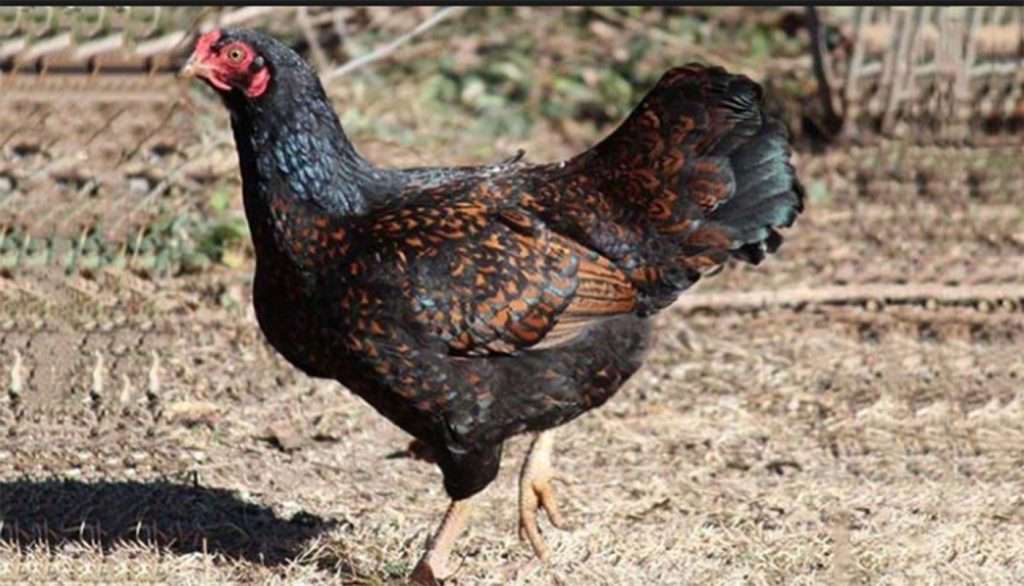
In its home county of Cornwall in England, United Kingdom, the Cornish Chicken is referred to as the Indian Game. The most popular breeds in the chicken meat market are Cornish chickens and their hybrids. It’s a big, bulky breed. The Cornish Game and the Jubilee Cornish Game are the two variants.
Description
Well-muscled, compact, and with a broad and deep breast. Wide-set, short, thick legs. Wide skull with deep-set eyes, an outsized brow, and a thick, curved beak. feathers that are short, close, and thin with little to no down. Low tail carried. Body types for men and women are similar, with a few subtle sex distinctions. Nails and beak are horn- or yellow-colored. Yellow-colored legs. Small and crimson wattles and ear lobes are present.
In the original Dark, the females have black lacing on rich brown, and the males are primarily glossy beetle-green black with traces of bay. The APA also recognizes Buff, White, and White Laced Red. Dark, White, White Laced Red, Buff, Black, Blue Laced Red, Mottled, and Spangled are among the bantam kinds offered.
As Pet
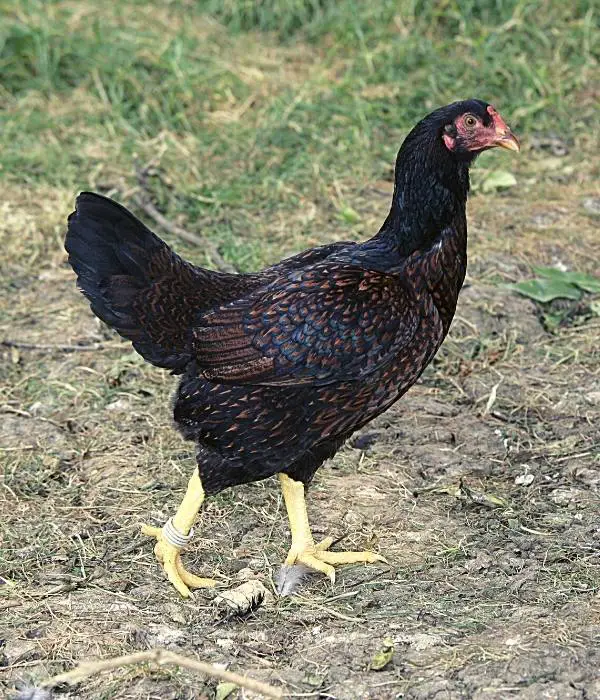
Care
You can boost the likelihood that you will successfully rear your Cornish chickens by keeping a few pointers in mind. Among these hints are:
Put all new birds in quarantine for a minimum of 30 days. Put the straw and the eggs of these chickens in a different location if you notice any symptoms of illness until you know whether the poultry is ill and whether it is contagious. Wear security gear throughout this time.
Housing
Cornish chickens require a home that is both weatherproof and spacious enough to allow for lots of movement. They should also have low perches because their short legs make it difficult for them to walk on high ones. They should be able to comfortably fit through the pop-holes if they are big enough.
Compared to other chickens, Cornish chickens require a bigger space to grow. Because of how well-adapted this breed is to foraging, you can let these birds roam freely. Give each bird a minimum of 2 square feet of run space if you decide to keep him or her inside. Their coop should be at least 6 square feet in size. Each chicken needs 3 square feet of floor area if you’re using a mobile chicken trailer, and the trailer needs to be moved at least three times per week.
Feeding
Cornish chickens are not picky eaters when it comes to food. They will consume a variety of foods, such as seeds, worms, and insects. They perform best, nevertheless, when given access to high-quality, protein-rich poultry feed. Additionally, they must always have access to fresh water.
When raising these chicks for meat, nutrition is extremely important. At least 3 inches of feeder space must be available for every bird. Your feed must have 20% or more protein.
Temperament
Having said that, it’s critical to understand that the Cornish chicken can be aggressive. Typically, this means that the roosters won’t always make the best renters and that the hens will compete to be first in the pecking order.
Grooming
The only special grooming the Cornish need is a dust wash, possibly with some herbal essences sprinkled into the loose sand to aid with bugs and extra feather oils. However, they are quite vulnerable to parasites like mites, lice, and other worms. To keep your chickens healthy, check their feathers at least once a week for these pests.
Table
